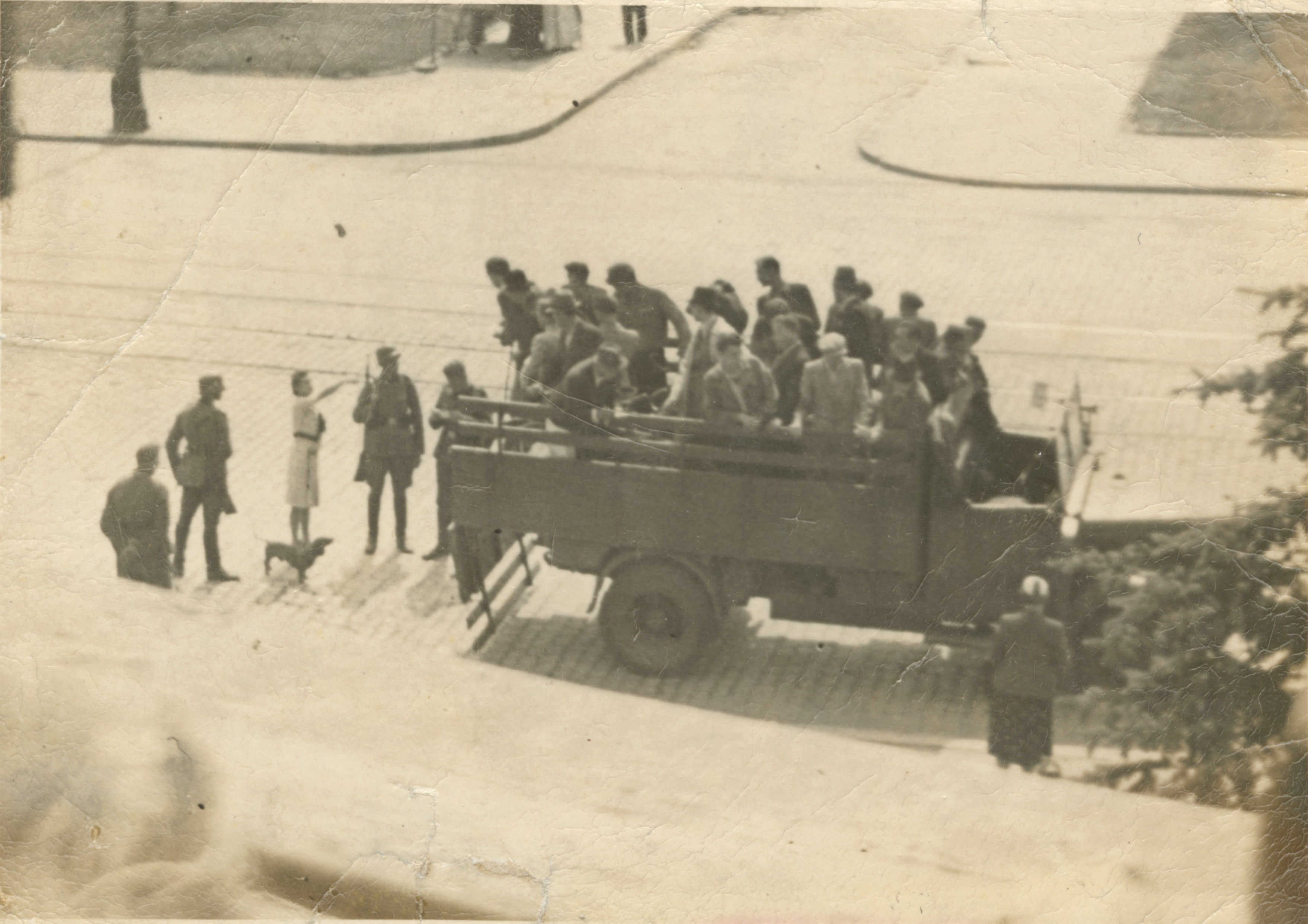|
Lagerbordell
In World War II, Nazi Germany established brothels in the concentration camps (''Lagerbordell'') to create an incentive for prisoners to collaborate, although these institutions were used mostly by Kapos, "prisoner functionaries" and the criminal element, because regular inmates, penniless and emaciated, were usually too debilitated and wary of exposure to Schutzstaffel (SS) schemes. In the end, the camp brothels did not produce any noticeable increase in the prisoners' work productivity levels, but instead, created a market for coupons among the camp VIPs."Camp Brothel". ''Wollheim Memorial''. Accessed June 30, 2011. The women forced into these brothels came mainly from the Ravensbrück concentration camp< ... [...More Info...] [...Related Items...] OR: [Wikipedia] [Google] [Baidu] |
German Military Brothels In World War II
Military brothels (german: Militärbordelle) were set up by Nazi Germany during World War II throughout much of occupied Europe for the use of Wehrmacht and SS soldiers. These brothels were generally new creations, but in the west, they were sometimes set up using existing brothels as well as many other buildings. Until 1942, there were around 500 military brothels of this kind in German-occupied Europe.Helge Sander, Barbara Johr (eds.), ''Befreier und Befreite - Krieg - Vergewaltigung - Kinder'', Frankfurt am Main 2005 Often operating in confiscated hotels and guarded by the Wehrmacht, these facilities served travelling soldiers and those withdrawn from the front. According to records, at least 34,140 European women were forced to serve as prostitutes during the German occupation of their own countries along with female prisoners of concentration camp brothels. In many cases in Eastern Europe, teenage girls and women were kidnapped on the streets of occupied cities during Ger ... [...More Info...] [...Related Items...] OR: [Wikipedia] [Google] [Baidu] |
Bundesarchiv Bild 192-174, KZ Mauthausen, Lagerbordell Lager Gusen
The German Federal Archives or Bundesarchiv (BArch) (german: Bundesarchiv) are the National Archives of Germany. They were established at the current location in Koblenz in 1952. They are subordinated to the Federal Commissioner for Culture and the Media ( Claudia Roth since 2021) under the German Chancellery, and before 1998, to the Federal Ministry of the Interior. On 6 December 2008, the Archives donated 100,000 photos to the public, by making them accessible via Wikimedia Commons. History The federal archive for institutions and authorities in Germany, the first precursor to the present-day Federal Archives, was established in Potsdam, Brandenburg in 1919, a later date than in other European countries. This national archive documented German government dating from the founding of the North German Confederation in 1867. It also included material from the older German Confederation and the Imperial Chamber Court. The oldest documents in this collection dated back to the year ... [...More Info...] [...Related Items...] OR: [Wikipedia] [Google] [Baidu] |
Google Books
Google Books (previously known as Google Book Search, Google Print, and by its code-name Project Ocean) is a service from Google Inc. that searches the full text of books and magazines that Google has scanned, converted to text using optical character recognition (OCR), and stored in its digital database.The basic Google book link is found at: https://books.google.com/ . The "advanced" interface allowing more specific searches is found at: https://books.google.com/advanced_book_search Books are provided either by publishers and authors through the Google Books Partner Program, or by Google's library partners through the Library Project. Additionally, Google has partnered with a number of magazine publishers to digitize their archives. The Publisher Program was first known as Google Print when it was introduced at the Frankfurt Book Fair in October 2004. The Google Books Library Project, which scans works in the collections of library partners and adds them to the digital inve ... [...More Info...] [...Related Items...] OR: [Wikipedia] [Google] [Baidu] |
Alain Resnais
Alain Resnais (; 3 June 19221 March 2014) was a French film director and screenwriter whose career extended over more than six decades. After training as a film editor in the mid-1940s, he went on to direct a number of short films which included ''Night and Fog'' (1956), an influential documentary about the Nazi concentration camps.Ephraim Katz, ''The International Film Encyclopedia''. (London: Macmillan, 1980.) p. 966–967. Resnais began making feature films in the late 1950s and consolidated his early reputation with '' Hiroshima mon amour'' (1959), '' Last Year at Marienbad'' (1961), and '' Muriel'' (1963), all of which adopted unconventional narrative techniques to deal with themes of troubled memory and the imagined past. These films were contemporary with, and associated with, the French New Wave (''la nouvelle vague''), though Resnais did not regard himself as being fully part of that movement. He had closer links to the "Left Bank" group of authors and filmmakers w ... [...More Info...] [...Related Items...] OR: [Wikipedia] [Google] [Baidu] |
Night And Fog (1956 Film)
''Night and Fog'' (french: Nuit et brouillard) is a 1956 French documentary short film. Directed by Alain Resnais, it was made ten years after the liberation of Nazi concentration camps. The title is taken from the ''Nacht und Nebel'' (German for "Night and Fog") program of abductions and disappearances decreed by Nazi Germany. The documentary features the abandoned grounds of Auschwitz and Majdanek established in occupied Poland while describing the lives of prisoners in the camps. ''Night and Fog'' was made in collaboration with scriptwriter Jean Cayrol, a survivor of the Mauthausen-Gusen concentration camp. The music of the soundtrack was composed by Hanns Eisler. Resnais was originally hesitant about making the film and refused the offer to make it until Cayrol was contracted to write the script. The film was shot entirely in the year 1955 and is composed of contemporary shots of the camps plus stock footage. Resnais and Cayrol found the film very difficult to make due to it ... [...More Info...] [...Related Items...] OR: [Wikipedia] [Google] [Baidu] |


